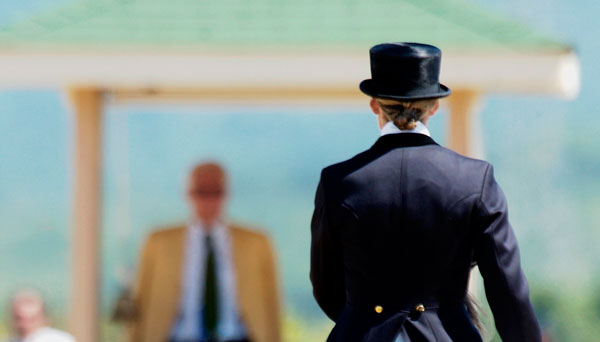Since 1951 equestrian sports have qualified for dressage at the Olympic Games through the Pan American Games. The qualifier is an Olympic-style competition that takes place one year before every Olympic Games, and participants are entered by their respective National Olympic Committees.

Recently, the Pan American Equestrian Council (PAEC) established a new format for the Pan American Games that will continue to include competitors in the “Small Tour” (day one: Prix St. Georges; day two: Intermediate I; day three: Intermediate Freestyle) but will add the option of the “Big” or “Large Tour” (day one: Grand Prix; day two: Grand Prix Special or Grand Prix Freestyle). The decision was based on the idea that the Americas are ready to move to the Large Tour for Olympic Games qualifiers and other international competitions.
FEI Dressage Committee member Thomas Baur and FEI judge Maribel Alonzo drew up the FEI proposal for the new format and tested it at the Wellington Nations Cup CDIO in February 2014, as the FEI ensures technical control of all equestrian sports and the Pan American Games. The test competition ran successfully for the participating countries, so this new format will now be employed at the 2015 games in Toronto, Canada, July 10 – 26, 2015.
Forty-two countries in the Americas are invited to participate in the 2015 Pan American Games with this new mix of Small and Large Tour teams. The hope is to eventually change the format to a team of four Large Tour pairs. In the meantime, the transition accounts for the many Central and South American countries that have riders developing horses for the 2016 Olympics in Rio de Janeiro, Brazil.

“The reason to have the Small Tour still in the Pan American Games is to have all of North, Central and South America on board,” says Baur of the change. “It is too big of a jump for all the countries to go straight into Grand Prix. We do not want to lose a flag that has worked really hard for many years. But we want to show all the Americas that it’s time to move to Grand Prix. All the countries have to progress in the future. It’s better for the Americas and better for the horse and rider combinations to progress to the same level as the Europeans.”
Getting a Large Tour horse ready for international competition is not easy, and top riders from all the American countries must have a chance to do that. The year between the Pan American Games and the Olympic Games provides those riders with the time to get their horses more confident and competitive.

“The decision of the FEI General Assembly has been made,” said Baur. “We came to the conclusion that the best team from the Pan American Games with the best Grand Prix horses will get the Olympic slot. Brazil will get an automatic team slot because the host nation is pre-qualified. The other countries have the possibility to send individuals. There is one guaranteed place for an individual from North America and one for the Caribbean Islands and two Olympic slots for Mexico-South.”
Only time will tell whether this plan is as successful as many hope it will be. In the meantime, countries are busy preparing for the new format at the upcoming competition in Brazil.
2015 Qualification Procedures
To be eligible, qualifying riders must achieve the following: A 62 percent in a CDN or CDI in the Small Tour or a 58 percent in a CDN or CDI 2* in the Grand Prix for the Large Tour. In both cases, scores must be given by two FEI judges who are a different nationality than the competing athlete.
Teams are fielded from the three best-ranked teams of the South American Games, the two best-ranked American teams at the World Equestrian Games, the three best-ranked teams of the Central American and Caribbean Games and the host team (Brazil) is automatically qualified.
Individuals are fielded from the three best-ranked individuals from the South American Games, the three best-ranked individuals from the World Equestrian Games and the three best-ranked individuals from the Central American and Caribbean Games.
The quota for dressage is no more than 45 combinations—nine teams (three or four riders per team) and nine individuals.











